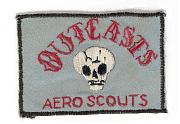This brings to mind something I observed at a C.O.B. for the time I was there. It seemed that about 40% or more of the heavy airlifters serving the base were Russian aircraft, AN-12's and IL-76's, with east European crews. The 40% figure is a subjective guess, but for every C-17 that landed 1.5 IL-76's landed and there were rather more Antonovs than Hercs.
Could this reliance on former Soviet aircraft and pilots to supply what seems like a big part of our airlift be a problem in the the future? What if Vladimir decides he doesn't want these guys to do this and pressures them to stop?
This apparent shortage of airlift I don't blame on the USAF though. They keep asking for more C-17's and the Pentagon keeps saying no.




 Great way to loose weight....sounds like a Paris Hilton diet plan
Great way to loose weight....sounds like a Paris Hilton diet plan







 "A Sherman can give you a very nice... edge."- Oddball,
"A Sherman can give you a very nice... edge."- Oddball, 



 I was simply saying what is sterile here is not as easy on the ground. Regarding the "show of force" mission, it is a piece that is available in a toolkit.
I was simply saying what is sterile here is not as easy on the ground. Regarding the "show of force" mission, it is a piece that is available in a toolkit. 
Bookmarks